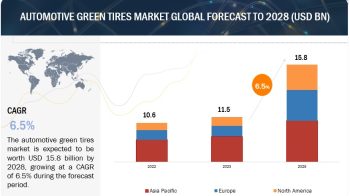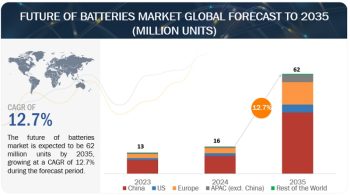
The Automotive Turbocharger Market is estimated to be USD 16.87 billion in 2018 and is projected to reach USD 31.61 billion by 2025, at a CAGR of 9.39%, from 2018 and 2025.
The increasing production of passenger cars, stringent emission regulations, and changing customer preferences for greater power generating vehicles will drive the global automotive turbocharger market.
Opportunities:
1 Future Demand for Electric Turbochargers to Create Opportunities for Turbo Manufacturers
2 Turbocharger for Gasoline Engines
Automotive turbocharger market includes manufacturers such as Honeywell (US), BorgWarner (US), MHI (Japan), IHI (Japan), and Continental (Germany).
Download PDF Brochure @ https://www.marketsandmarkets.com/pdfdownloadNew.asp?id=919
Globally, the automotive industry is driven by legislation and consumer demands to reduce emissions and increase fuel efficiency. With the increase in fuel prices, the end-users prefer vehicles with higher fuel efficiency. The regulatory bodies around the world are also demanding better fuel economy, which would ultimately result in lower emissions from the vehicles. This has encouraged the OEMs to develop new technologies and use lightweight materials and advanced engine designs that promise fuel-efficiency, along with the reduction in emissions. Engine downsizing is an efficient way of enhancing indicated fuel conversion efficiency (IFCE) and the lowering of CO2 and NOx emissions. A downsized engine with a turbocharger can generate more power and more efficiency than a naturally aspirated engine. Engine downsizing has resulted in an increase in fuel economy. The trend of engine downsizing is expected to continue its growth rate, and it is driving the market for the automotive turbocharger.
The turbocharger technologies considered are VGT/VNT, wastegate, and electric turbocharger, which can enhance fuel efficiency and achieve better torque and power generation with less emission. According to MarketsandMarkets analysis, in Europe and North America, the majority of the passenger cars are equipped with VGT/VNT turbochargers. However, in Asia wastegate turbocharger is widely used due to its cost advantage. VGT turbocharger is expensive than wastegate turbocharger. Turbocharger manufacturers and its component suppliers can target such region where VGT technology is in a growing trend. The electric turbocharger is a new technology and can be operational only with 48-volt architecture. Cars based on 48-volt architecture are expected to get commercialized by 2020 as per MarketsandMarkets analysis.
Request for Sample Pages @ https://www.marketsandmarkets.com/requestsampleNew.asp?id=919
The US and China are the global leaders in automotive manufacturing. The automotive sectors of these countries are dominated by gasoline vehicles. The US and China are thus expected to be the largest markets for gasoline turbocharger. Gasoline is the most used fuel in passenger cars and some light-duty vehicles. The usage of gasoline in heavy commercial vehicles is virtually zero. However, the usage of turbochargers in petrol vehicles is a considerable new trend and is fueled by the trends toward increasing fuel economy and reducing emissions. The installation rate of turbochargers in passenger cars is the highest in Europe and North America as strict emission regulations are in place in these regions, and OEMs will have to use turbochargers in order to comply with these regulations. In Asian countries like China and India, lack of such regulations results in OEMs not using turbochargers as often as they do in Europe and North America. Tier-1 and Tier 2 can enter in the developing markets such as China and India, which have the potential turbocharger market.

